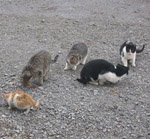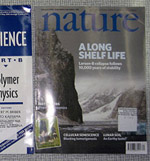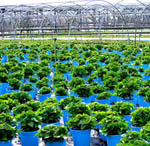Making winter sports less intrusive on wildlife
 Birds,
Birds,  Recreation
Recreation  Credit, Charles J. Sharp.Winter snow sports that make use of relatively undeveloped areas or wilderness may seem to be low impact on plant and animal habitat. However, at least in backwoods skiing or snowboarding areas, the presence of humans can be a negative factor on the health and viability of wintering populations of local animals, regardless of the lightness of their impact on the ground.
Credit, Charles J. Sharp.Winter snow sports that make use of relatively undeveloped areas or wilderness may seem to be low impact on plant and animal habitat. However, at least in backwoods skiing or snowboarding areas, the presence of humans can be a negative factor on the health and viability of wintering populations of local animals, regardless of the lightness of their impact on the ground.
Until recently, conservation planners have not had good tools for predicting where wilderness recreational activities are likely to be detrimental to wintering species, in large part because of the unpredictability of the location, extent and intensity of those activities.
A paper recently published in Ecological Applications on the impact of snowshoeing and backcountry skiing on local populations of black grouse now provides a modeling approach that can be adapted by planners interested in mitigating negative impacts of human use of undeveloped areas for recreation.
The study used aerial mapping of human tracks from snowshoeing and skiing and bird tracks made by foraging black grouse to identify places where human-bird interaction was likely to occur. Mapping of these likely occurrence locations, along with locations of snow-sport infrastructures such as ski lifts, showed that less than 25% of the total black grouse habitat was unaffected by human recreational use.
Many species have been shown to avoid otherwise suitable habitat merely because of the presence of human activity. In addition, populations living near areas of frequent human use have been shown to have increased stress levels and decreased viability. In many cases, habituation to human activity is impossible due to the unpredictable nature of that use.
This new modeling paradigm can help developers of snow sports facilities site trails and infrastructure development to minimize potential human interactions with key species, and to educate backwoods recreationists about the impacts of their chosen sports. In some cases, restricting human use to times of day when the species in question is not active may be an effective tool; in others, re-routing trails may be necessary to provide sufficient buffer between human and animal uses.
Despite the quiet nature and low impacts to vegetation and ground cover of backcountry winter sports like snowshoeing and skiing, we humans must still take precautions that our fun does not come at the expense of other species’ survival.
--Karren Bassler is a contributing writer based in Madison Wisconsin and a consultant with Superior Nonprofits, LLC.
Braunisch, V., Patthey, P., & Arlettaz, R. (2010). Spatially explicit modelling of conflict zones between wildlife and outdoor snow-sports: prioritizing areas for winter refuges Ecological Applications DOI: 10.1890/09-2167.1




Reader Comments